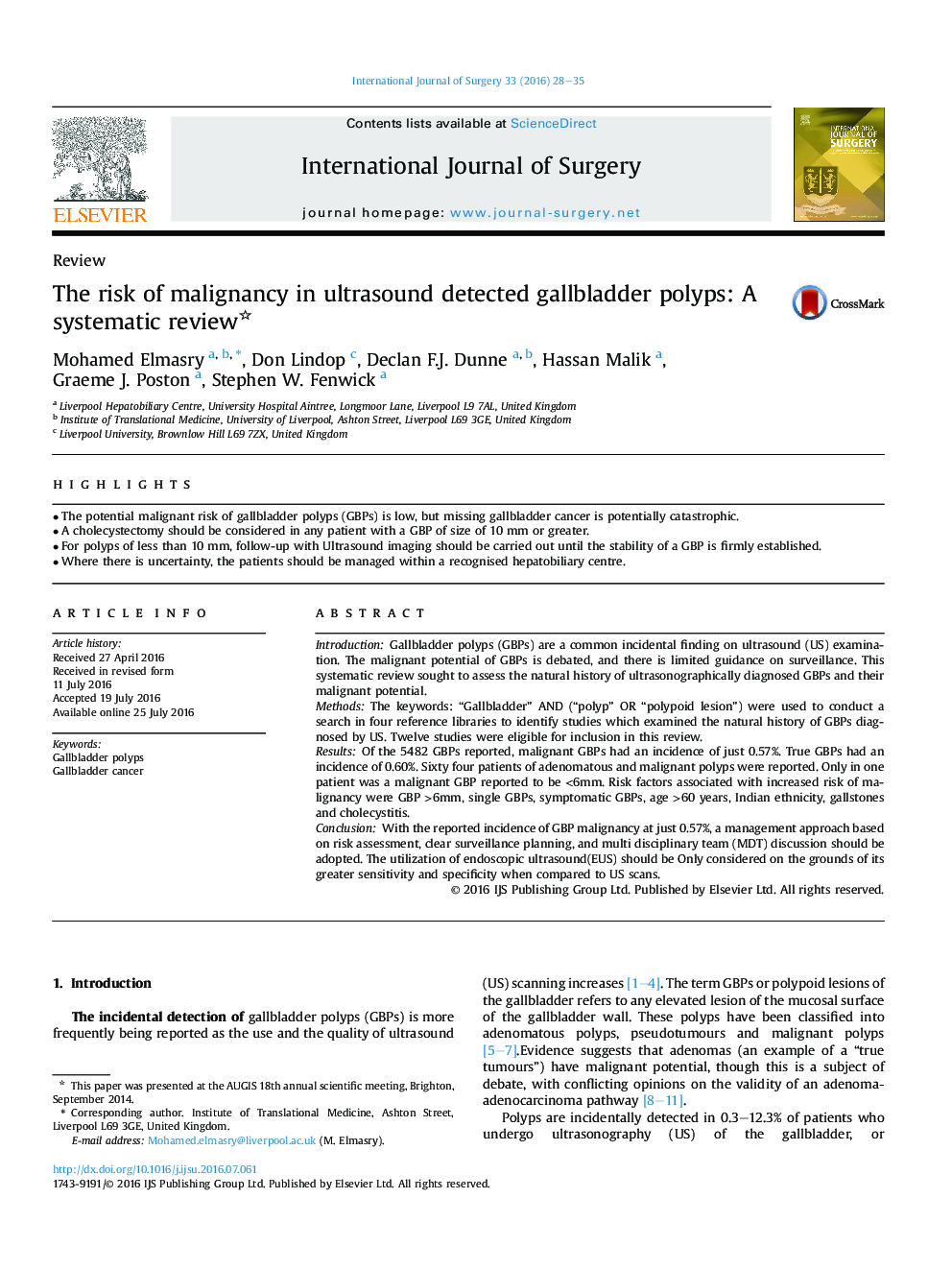| Article ID | Journal | Published Year | Pages | File Type |
|---|---|---|---|---|
| 4285291 | International Journal of Surgery | 2016 | 8 Pages |
•The potential malignant risk of gallbladder polyps (GBPs) is low, but missing gallbladder cancer is potentially catastrophic.•A cholecystectomy should be considered in any patient with a GBP of size of 10 mm or greater.•For polyps of less than 10 mm, follow-up with Ultrasound imaging should be carried out until the stability of a GBP is firmly established.•Where there is uncertainty, the patients should be managed within a recognised hepatobiliary centre.
IntroductionGallbladder polyps (GBPs) are a common incidental finding on ultrasound (US) examination. The malignant potential of GBPs is debated, and there is limited guidance on surveillance. This systematic review sought to assess the natural history of ultrasonographically diagnosed GBPs and their malignant potential.MethodsThe keywords: “Gallbladder” AND (“polyp” OR “polypoid lesion”) were used to conduct a search in four reference libraries to identify studies which examined the natural history of GBPs diagnosed by US. Twelve studies were eligible for inclusion in this review.ResultsOf the 5482 GBPs reported, malignant GBPs had an incidence of just 0.57%. True GBPs had an incidence of 0.60%. Sixty four patients of adenomatous and malignant polyps were reported. Only in one patient was a malignant GBP reported to be <6mm. Risk factors associated with increased risk of malignancy were GBP >6mm, single GBPs, symptomatic GBPs, age >60 years, Indian ethnicity, gallstones and cholecystitis.ConclusionWith the reported incidence of GBP malignancy at just 0.57%, a management approach based on risk assessment, clear surveillance planning, and multi disciplinary team (MDT) discussion should be adopted. The utilization of endoscopic ultrasound(EUS) should be Only considered on the grounds of its greater sensitivity and specificity when compared to US scans.
